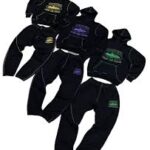- Introduction to Variable Frequency Drive (VFD)
- Understanding the Basics: How VFDs Work
- Advantages of Variable Frequency Drives
- Applications Across Industries
- Industrial Manufacturing
- HVAC Systems
- Water Treatment Plants
- Selecting the Right VFD for Your Needs
- Consideration of Motor Types
- Matching Voltage and Frequency Ratings
- Energy Efficiency Factors
- Installation and Maintenance Tips
- Proper Wiring Procedures
- Routine Checks and Troubleshooting
- Challenges and Solutions in VFD Implementation
- Future Trends in Variable Frequency Drives
- Real-world Success Stories
- Comparing VFDs with Traditional Motor Control Methods
- Regulatory Compliance and Standards for VFDs
- Environmental Impact: How VFDs Contribute to Sustainability
- Cost-Benefit Analysis for VFD Installation
- Common Myths and Misconceptions about VFDs
- Conclusion
Introduction to Variable Frequency Drive (VFD):
In the dynamic landscape of industrial processes and energy efficiency, Variable Frequency Drives (VFDs) have emerged as game-changers. These electronic devices play a pivotal role in controlling the speed of electric motors, offering a wide array of benefits that extend beyond traditional motor control methods.
Understanding the Basics: How VFDs Work:
At their core, VFDs manipulate the frequency and voltage supplied to an electric motor, allowing precise control over its speed. Unlike fixed-speed motors, VFDs enable a seamless adjustment of motor speed to match the specific requirements of a task, optimizing energy consumption and overall efficiency.
Advantages of Variable Frequency Drives:
The adoption of VFDs brings forth a host of advantages. From energy savings and reduced wear and tear on machinery to enhanced process control, these devices are a cornerstone of modern industrial operations.
Applications Across Industries:
Industrial Manufacturing:
In the realm of industrial manufacturing, VFDs find extensive use in conveyor systems, pumps, and fans. The ability to fine-tune motor speed enhances production efficiency and minimizes energy wastage.
HVAC Systems:
Heating, Ventilation, and Air Conditioning (HVAC) systems benefit significantly from VFD integration. The variable speed control ensures optimal climate control while conserving energy during periods of lower demand.
Water Treatment Plants:
Water treatment plants leverage VFDs for pump control, ensuring precise water flow rates. This not only contributes to operational efficiency but also plays a role in water conservation efforts.
- Selecting the Right VFD for Your Needs
- Consideration of Motor Types
- Choosing the right VFD involves considering the type of motor it will control. Different motors have varying speed control requirements, and a tailored approach ensures optimal performance.
Matching Voltage and Frequency Ratings:
Mismatched voltage and frequency can lead to motor inefficiencies and premature wear. Aligning the VFD specifications with the motor’s requirements is crucial for long-term reliability.
Energy Efficiency Factors:
One of the primary drivers behind VFD adoption is energy efficiency. Evaluating the energy-saving features of different VFD models is essential for businesses aiming to reduce their carbon footprint.
- Installation and Maintenance Tips
- Proper Wiring Procedures
- Correct installation is paramount for VFD functionality. Following proper wiring procedures and adhering to manufacturer guidelines mitigate the risk of electrical issues and equipment damage.
Routine Checks and Troubleshooting:
Regular maintenance checks are key to preventing unexpected downtime. Implementing routine inspections and having a troubleshooting plan in place ensures the continuous and reliable operation of VFDs.
Challenges and Solutions in VFD Implementation:
While VFDs offer numerous benefits, challenges may arise during the implementation phase. Addressing issues such as harmonics, overvoltage, and electromagnetic interference requires a comprehensive understanding of the system.
Future Trends in Variable Frequency Drives:
The landscape of VFD technology is continually evolving. Future trends include advancements in sensor technology, enhanced communication capabilities, and integration with IoT platforms for smart and predictive maintenance.
Real-world Success Stories:
Exploring real-world examples of successful VFD implementations provides valuable insights into the tangible benefits and ROI that businesses can achieve by embracing this technology.
Comparing VFDs with Traditional Motor Control Methods:
A comparative analysis sheds light on the stark differences between VFDs and traditional motor control methods, emphasizing the superior efficiency, flexibility, and cost-effectiveness of VFDs.
Regulatory Compliance and Standards for VFDs:
Navigating the regulatory landscape is crucial for businesses adopting VFDs. Compliance with industry standards ensures the safe and legal operation of VFD-equipped systems.
Environmental Impact: How VFDs Contribute to Sustainability:
The green credentials of VFDs make them catalysts for sustainable practices. By optimizing energy usage and reducing waste, VFDs align with the global push towards environmentally friendly industrial processes.
Cost-Benefit Analysis for VFD Installation:
A thorough cost-benefit analysis helps businesses make informed decisions regarding VFD adoption. While the initial investment may seem significant, the long-term savings in energy costs often outweigh the upfront expenses.
Common Myths and Misconceptions about VFDs:
Dispelling myths and misconceptions surrounding VFDs is crucial for informed decision-making. Addressing concerns related to reliability, complexity, and ROI fosters a clearer understanding of the technology.
Conclusion:
In conclusion, Variable Frequency Drives represent a transformative force in industrial operations, offering unparalleled control over motor speed and energy consumption. As industries continue to prioritize efficiency and sustainability, the role of VFDs is set to expand further, shaping the future of motor control technology.
Are you looking for GE gas turbine spare parts suppliers? WOC is one of the most reliable suppliers of GE gas turbine spare parts in the United States. Since day one, we have specialized in gas turbine maintenance, services, balance of plant, and the timely supply of parts. Our goal is to have the parts you need to support turbine and plant maintenance, repairs and other services. Our capabilities allow us to serve the United States and worldwide natural gas turbine market. As one of the world’s best GE gas turbine spar parts suppliers, WOC has a vast array of parts and components in our warehouse. These parts and components are primarily located at our facility in New Jersey, but can be shipped immediately across the country or world if needed. We pride ourself on customer service and inventory availability.
FAQs:
Are VFDs suitable for all types of motors?
VFDs are compatible with various motor types, but proper consideration of motor specifications is essential for optimal performance.
What challenges might arise during VFD implementation?
Harmonics, overvoltage, and electromagnetic interference are common challenges that businesses may face when implementing VFDs.
How do VFDs contribute to energy savings?
By adjusting motor speed to match specific requirements, VFDs optimize energy consumption, leading to significant cost savings over time.
Can VFDs be retrofitted into existing systems?
Yes, in many cases, VFDs can be retrofitted into existing systems, providing an efficient upgrade without the need for a complete overhaul.
What are the key factors to consider when selecting a VFD for a specific application?
Motor type, voltage and frequency ratings, and energy efficiency features are crucial factors to consider when choosing a VFD for a particular application.
Read more: Digital Microprocessor Controller Module: Unleashing the Power of Precision




